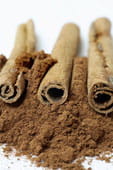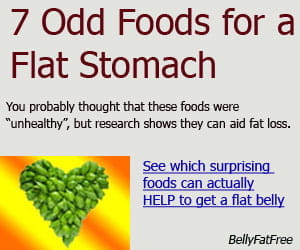5 Foods You Must Avoid
By Kevin DiDonato MS, CSCS, CES
Buying local, fresh foods from Farmers' markets, organic farms, or from your local grocer can go a long way for your budget and your health. However, not everyone can benefit or wants to shop healthy. Here are the top five foods to avoid or minimize in your diet for a longer, healthier life and a leaner waistline, followed by the top five foods that will give you amazing health benefits.
Food #1 Low-fat Foods
Food labeling can be very deceptive when it comes to food geared for weight loss. Low-fat foods are one of the products to be careful about. Just because the food says "low fat," does not mean the food is low calorie. Be sure to check the label and see how many calories are typically in the product. Most people associate low-fat foods with lower calories, so they tend to eat more. Do not be fooled by this deceptive labeling technique.
Food #2 Sugar-Free Foods
Sugar-free foods are geared to people with diabetes or at risk for developing diabetes. Sugar-free foods have low calories and no sugar.
However, look at the label under sugars, and you will see something interesting. Sugar-free foods tend to have sugar alcohols, which is an ingredient designed to give it sweetness. Most of the time, sugar alcohol is made from sugar products, which can lead to increased calories. Sugar alcohols carry between 1.5 and 4 calories per gram. Not only do you get extra calories, but you also can get cramping, bloating, and other gastrointestinal problems if you ingest too much.
Food #3 Commercial Smoothies
Normally, smoothies are associated with healthy eating. They have skim milk, fruit, and yogurt, so they are considered a great, healthy food. Some commercial smoothies, however, have many hidden calories from extra sugar. Some smoothies are also made with ice cream, so you end up ballooning sugar, fat, and calorie content. Most of the time, the fruit in smoothies is blended up into fruit juice, or fruit juice is added. This eliminates the fiber that is found in the skin of most fruits. My advice: Make your smoothies at home, and leave the commercial smoothies on the shelf.
Food #4 Commercial Yogurts
Yogurt, again, has been considered a natural health product containing calcium, probiotics, and other products that have been shown to be beneficial to our health. Look at the label again, and you might see something surprising. When looking at the label, some of the first few ingredients in yogurt are different forms of sugar. All this extra sugar can lead to weight gain and stubborn, hard-to-lose body fat. So again, read the label and see exactly what is in the product before you choose the yogurt of choice.
Food #5 Sugary energy drinks including items with added vitamins and minerals
Energy drinks have been advertised as giving you that extra pick-me-up during the day, and a way to increase the intensity of your workouts. Energy drinks can contain high amounts of caffeine and sugar, which gives you that initial pick-me-up, but you end up crashing hard later. Also, some drinks that have added vitamins and minerals, can have loads of sugar as well. So stop and think before you drink and choose something lower in calories and sugar, maybe something like coffee or tea.
Next, I am going to share with you 5 foods that are beneficial to your health, and you might not even know it.
Food #1 Swiss Chard
Aging can create many different problems for people. Wrinkles, lack of balance, and our eyesight can worsen, and are just some of the different things that happen with the aging process. Swiss chard is considered a super food because of some of the amazing caroteniods that can be found in this leafy green vegetable. Swiss chard contains high levels of lutein and zeaxanthin that have been shown to help with good eyesight. These two caroteniods have been shown to build up in the eyes, which help with the way light rays enter our eyes and are absorbed.
Food #2 Pepper, Especially Capsaicin
So most of you are probably asking why pepper is on the list. Pepper is a zero-calories food that can add a lot of flavor to your foods. Not only does it pack a great punch to your foods, but capsaicin has been shown to have tremendous anti-inflammatory properties. It has also been shown to be helpful in fighting some cancers because of its anti-cancer effects.
Food #3 Wheatgrass
There are plenty of juices out there that contain Wheatgrass which is chock full of vitamins and minerals that will keep you healthy. Loaded with Vitamins, B, C, and E, this food can help to clean out your system and fight infections. Not only does this food contain essential vitamins and minerals, but it also is a complete protein. This food is full of the essential amino acids that our bodies require for building muscle. The high concentration of vitamins helps protect the body from stress that our bodies are under daily.
Food #4 Tahini
Tahini is now found in most grocery stores as an excellent source of all the B vitamins as well as calcium. B vitamins are essential in development of healthy cells in the body, especially red blood cells. B vitamins can also help in raising metabolism, and help our immune system become stronger. Tahini also holds a surprising amount of calcium, zinc, and copper. The high levels of calcium can help keep bones strong and healthy, and might be responsible in fighting some cancers. Tahini also holds an abundance of fiber, specifically sesamin and sesomolin, which can have positive effects in lowering cholesterol.
Food #5 Avocado
This amazing fruit helps reduce inflammation through some of the carotenoids found in the green, fleshy part of the avocado. This vegetable also has a tremendous amount of fat, but the good fats that are beneficial to the body. The main source of fat is Oliec acid, which helps with fat absorption and also helps to lower the risk for developing heart disease. Avocados also have phytosterols, which keep inflammation in the body under control.



 1957 and hundreds of studies have shown it to reduce inflammation, reduce and prevent swelling and remove waste and toxins from the blood.
1957 and hundreds of studies have shown it to reduce inflammation, reduce and prevent swelling and remove waste and toxins from the blood. Turmeric has the unique ability of using its antioxidant powers to seek out and destroy free radicals in the body which contribute to pain and swelling.
Turmeric has the unique ability of using its antioxidant powers to seek out and destroy free radicals in the body which contribute to pain and swelling. range of proteolytic enzymes and works by breaking down proteins.
range of proteolytic enzymes and works by breaking down proteins.  Numerous studies have proven it's effectiveness in reducing pain and inflammation.
Numerous studies have proven it's effectiveness in reducing pain and inflammation.  One of the most widely used herbs in Indian medicine, it has been used for centuries by traditional Indian healers to reduce pain and inflammation.
One of the most widely used herbs in Indian medicine, it has been used for centuries by traditional Indian healers to reduce pain and inflammation. Used for over 2,500 years in Asia, Ginger has been used to treat nausea and to reduce pain and inflammation.
Used for over 2,500 years in Asia, Ginger has been used to treat nausea and to reduce pain and inflammation.  The Mojave Yucca root has more benefits than you could shake a stick at!
The Mojave Yucca root has more benefits than you could shake a stick at!  In several other articles, I've told you about some of the really cool experiments that Tim Ferriss has done in his new book that I read recently,
In several other articles, I've told you about some of the really cool experiments that Tim Ferriss has done in his new book that I read recently,  The pre-meal cinnamon
The pre-meal cinnamon










